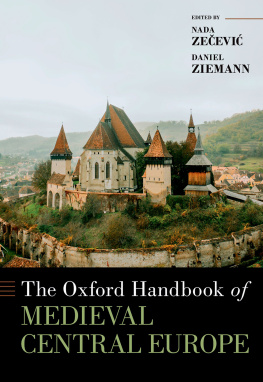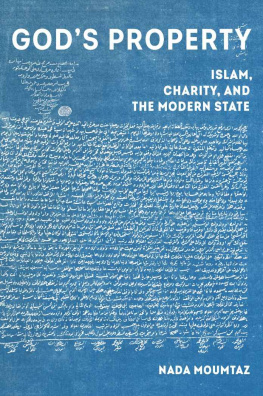Nada Bakos is a former Central Intelligence Agency analyst and targeting officer. She was a key member of the team charged with analyzing the relationship between Iraq, al Qaida, and the 9/11 attacks. During the war in Iraq, Bakos served as the chief targeting officer tracking one of the worlds most wanted terrorists, Abu Musab al-Zarqawi. In 2006, Zarqawi was killed in a targeted strike conducted by US military forces. She is a senior fellow in the Program on National Security at the Foreign Policy Research Institute and was featured in the Emmy Awardwinning HBO documentary Manhunt. She has appeared as a guest commentator on PBSs Frontline, CNN, ABC, MSNBC, Fox, NBC, and as a guest on Late Night with David Letterman. She is also a contributor for publications including the New York Times, The Atlantic, and the Washington Post. After leaving the CIA, Bakos worked in a key role with Starbucks Corporation Public Affairs and now works as a consultant for a variety of social media and technology organizations.
Copyright 2019 by Winthrop LLC
Cover design by HSU & Associates
Cover art by Kelly Gorham / Montana State University; arches by Nada Bakos
Cover copyright 2019 by Hachette Book Group, Inc.
Hachette Book Group supports the right to free expression and the value of copyright. The purpose of copyright is to encourage writers and artists to produce the creative works that enrich our culture.
The scanning, uploading, and distribution of this book without permission is a theft of the authors intellectual property. If you would like permission to use material from the book (other than for review purposes), please contact permissions@hbgusa.com. Thank you for your support of the authors rights.
Little, Brown and Company
Hachette Book Group
1290 Avenue of the Americas, New York, NY 10104
littlebrown.com
twitter.com/littlebrown
facebook.com/littlebrownandcompany
First ebook edition: June 2019
Little, Brown and Company is a division of Hachette Book Group, Inc. The Little, Brown name and logo are trademarks of Hachette Book Group, Inc.
This does not constitute an official release of CIA information. All statements of fact, opinion, or analysis expressed are those of the author and do not reflect the official positions or views of the Central Intelligence Agency (CIA) or any other U.S. Government agency. Nothing in the contents should be construed as asserting or implying U.S. Government authentication of information or CIA endorsement of the authors views. This material has been reviewed solely for classification.
The publisher is not responsible for websites (or their content) that are not owned by the publisher.
The Hachette Speakers Bureau provides a wide range of authors for speaking events. To find out more, go to hachettespeakersbureau.com or call (866) 376-6591.
ISBN 978-0-316-26045-9
E3-20190427-JV-NF-ORI
To E, H, and R My love and gratitude for your support
On a moonless night in May of 2011, an elite team of Navy SEALs blew the doors off their hinges at a compound in Abbottabad, Pakistan. They stormed up the darkened stairway to the third floor, and there, in a spartan bedroom, they shot Usama bin Ladin multiple times in his head and chest.
The 2011 strike should seem like a bookend to a winding tale of tragedy that began on September 11, 2001, when nineteen al Qaida terrorists hijacked four airliners over the United States. It was an event that would not have been possible without CIA officers mapping out the elaborate, evolving terror network that was unlike any foe the United States had faced before. Ultimately, by identifying and locating key playersa form of analysis known as targetingAgency personnel tracked bin Ladins trusted courier to a guesthouse near the Afghan border, and US forces were able to launch operations to capture or kill the emir of al Qaida.
Counterterrorism timelines, however, do not have fixed start or end points; ideology exists outside of one individual. The death of bin Ladin was dramatic, but it was not the final act in a series of events that began well before 2001and similar Agency work continues today against al Qaida and organizations like the Islamic State. It is almost impossible to quantify the exact number of people at the CIA who were involved in this fight over the yearsan array of employees who brought vast regional and intelligence expertise to the battle against al Qaida.
My contribution to the United States effort to combat terrorism came not in Afghanistan, the ancestral home of al Qaida, but farther west, in Iraq. I started working at the CIA before the attacks in New York, Pennsylvania, and Washington, DC, on September 11, 2001though this book focuses largely on 2003, the year the US-led coalition invaded Iraq and toppled Iraqi president Saddam Hussein, and on the fiery chaos that unfolded in the years following. My role throughout those years began as that of an analyst focused on whether there was a connection between Iraq and al Qaida and later as a targeting officer in the Directorate of Operations. My focus, and the focus of my team, was the movement sparked by Abu Musab al-Zarqawia Jordanian who quickly became a leader of terrorism in Iraq and differentiated himself from al Qaida by focusing on not only US targets but also Iraqis.
In the three years following the invasion of Iraq, as the United States struggled to institute democracy and implement basic security, no insurgent group caused more bloodshedwith more recklessness and indiscriminate focusthan Zarqawis. A high school dropout turned religious fanatic, Zarqawi found in the power vacuum and lawlessness that was post-Saddam Iraq the chance to be recognized as a leader, and he became responsible for literally thousands of deaths. His legacy carries on in the actions of the Islamic State, or ISIS; the climax of his bloody reign was the 2006 civil war between Iraqs rival Sunni and Shia factions, which many believe continues to this day. Removing Zarqawis network among the insurgency was crucial if Iraq was to have any shot at a stable future.
At the height of his power, Zarqawi commanded a regional terror network known as Al Qaida in Iraq (AQI). It was the most prominent regional franchise of al Qaida central. Zarqawi corresponded with bin Ladin personally; toward the end of his short life the man who would be nicknamed by his supporters the slaughtering sheik was in regular contact with al Qaida central command. The intelligence we gathered in dismantling Zarqawis network was crucial in building a response to al Qaida.
By the time of bin Ladins death, Id retired from the CIA. Today, the targeting of terrorists forms the backbone of Zero Dark Thirty and Homelanda topic that invariably comes up whenever people learn about my former life. People initially asked if Im the real-life Maya, the main character from Zero Dark Thirty. I am not and was not working for the CIA at the time; Mayas character was based on someone else. In my experience, it took a team of people more than twenty years to find bin Ladin.






